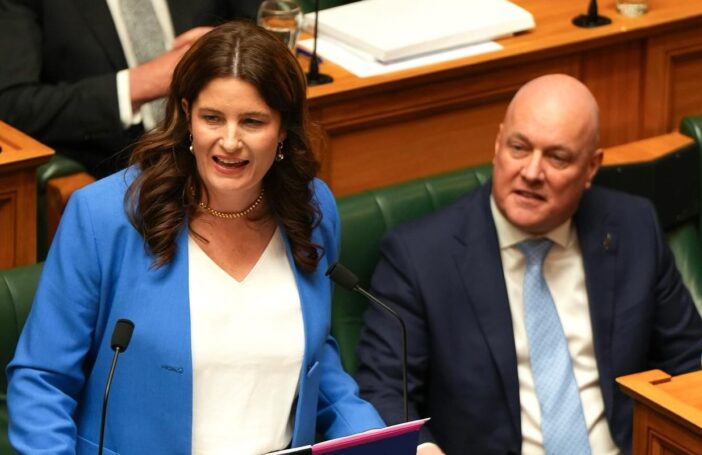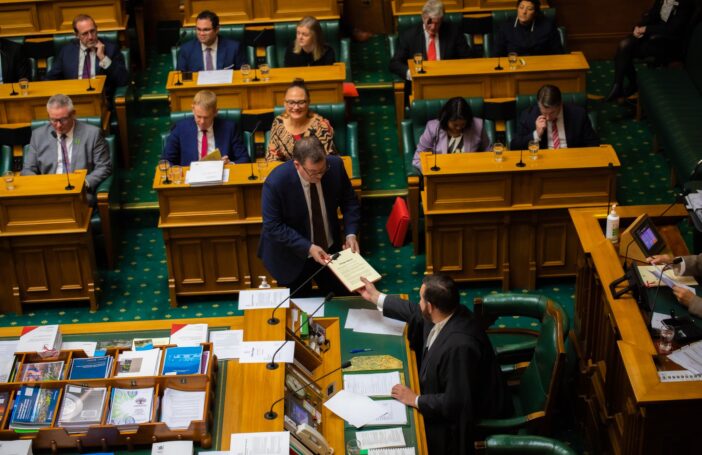Like all good myths, this one’s origins are lost in the mists of time. Maybe it was born in a brainstorming session in an NGO marketing department. Maybe it’s the byproduct of an ambitious politician aiming to gain political capital by bashing bureaucrats. Maybe. What is certain is that, wherever it came from, the myth that aid agencies and NGOs should keep overheads low is pervasive.
For example, in a recent speech the New Zealand Minister for Foreign Affairs, Murray McCully stated that:
The share of our total aid budget – that’s $525 million this year – that we spend on overheads is far too high.
It is approximately $45 million if you look simply at the costs of running what is now called the International Development Group, or IDG.
But when you account for IDG’s share of the overall MFAT corporate overheads – something that has only happened as a result of changes initiated by John Allen and myself – the cost of doing development business comes to $64 million, or roughly 12% of the total budget.
That figure needs to come down.
Meanwhile in the UK, the current government is also focused on reducing overheads, with a recent house of commons report noting that:
While DFID will be increasing its total spending over the next four years, it will also, according to the CSR, have to reduce the share of expenditure spent on running costs – from 4% to 2% of the total budget. Administration costs which are a subset of running costs, excluding most frontline staff, are to be reduced significantly – by 33% in real terms.
Here in Canberra things aren’t quite so bad, but they’re not good either. There is no talk of an absolute reduction in overheads, yet at the same time, as far as I’m aware, while there is plenty of talk of doubled aid flows, no one is suggesting that staffing numbers will be increased at anything near a similar rate.
In the NGO sector things aren’t any better, as Saundra Schimmelpfennig shows here in a blog post looking at not-for-profit advertising.
And, if this paper [pdf file – go to page 18] is anything to go by, the Myth of Low Overheads is alive and well in parts of academia too.
The idea that overheads need to be kept low is everywhere in development. It is also wrong. In fact it’s not just wrong, its harmful.
It’s wrong, and it’s harmful, because development work is complicated. Success isn’t guaranteed. Rather, it depends on a range of essential ingredients. Two of these essential ingredients are staff and time.
Staff and time are important because staff who are overly busy (and in my personal experience this includes almost everyone in an aid agency) aren’t able to fully engage with the complexity of what they are trying to achieve. Too often, they aren’t able to learn or they’re not able to put what they learn into practice. Corners get cut and mistakes get made. Potential alternatives are never investigated. Busy staff also often don’t have time to develop relationships with their counterparts in aid recipient countries. Yet these relationships matter.
The idea that aid money can be saved by simply eliminating back office staff is also wrong. Maybe somewhere on Earth there is an aid agency back office staffed by people who do nothing all day but surf the net and smoke cigarettes. But in my experience this is most definitely not the norm. Be it contracting or finance, or taking care of HR, back office staff are integral to aid work.
It’s true that the need for overheads can be reduced if the number of aid projects that aid agencies fund is also reduced, as part of a move to fewer and larger activities. This is what’s being suggested for DFID and the New Zealand aid programme. Yet even here the equation isn’t a simple one. While there is a good case for moving to higher level aid modalities, it’s not equally true for every aid recipient country or in every sector. Scaling up aid work should be driven by context – scaling up when it is likely to work – not by ideas being pushed for their own sake.
It’s also true that, depending on how overheads are defined, they can be reduced by contracting out services once undertaken by aid agency staff. But, unless contractors can do the same quality of work at a lower cost, this is nothing more than smoke and mirrors. And often they can’t – most aid agencies pay contractors a lot more on a daily basis than they pay their own staff.
To be clear, my argument here isn’t aid agency or NGO overheads should be unrestrained, or that they can never be too high. All I’m saying is that it’s not as simple as lower being better. The right way to think about overheads is to start by thinking about need: what is needed to do the job well. And then working from there. Simply reducing overheads for the sake of being able to talk about reductions is daft, and likely to do harm.
Terence Wood is a PhD student at ANU. Prior to commencing study he worked for the New Zealand government aid programme.






Thanks Peter – great comment.
Terence’s piece gets right to the heart of a serious issue that confronts all donors, including NGOs. The DAC has created a beauty parade by publishing data on the proportion of each donor’s ODA that is spent on management; donors respond either by cutting their management costs or, as Matt has pointed out, by massaging the figures to hide some of their management costs. And some NGOs try to attract more contributions by touting their relatively low spending on management.
Yes – every cent spent on management means one less cent spent directly on the poor. And some bureaucracies are bloated. But let’s get this in perspective. If I’m told that an airline can charge low fares because its overheads are low, I’m immediately prompted to wonder whether the low overheads include cutting corners on aircraft maintenance. The same applies to aid. Some forms of aid can proceed with very low overheads – AusAID could, for example, cut their management costs to virtually nothing: one person to sign cheques to be sent off to recipients. End result – budget spent, overheads virtually zero. That is why budget support is often attractive to donors. But, of course, the overheads have simply been transferred to the recipient government (unless the cheque simply goes into a Minister’s Swiss Bank account). So let’s get the business of “small is good” in proportion.
Thanks Peter,
In a range of areas, thus far I think the Minister’s main achievements to date have been to do the exact opposite of what he’s stated he was going to do. So, while he’s spoken boldly of reducing overheads, they’ve actually gone up.
Similarly, he scrapped the Koha fund in the name of transparency and efficiency, and replaced it with a fund that currently can’t get money out of the door and is now to be overseen by three political appointees.
Thanks Terence. I think the ‘myth’ if myth it be has grown out of the notion in the public mind that when they give money for aid causes any part od the dollar that does not go to the needy is being ripped off along the way. This notion, which most people would agree is nonsensical if they thought about it, is fostered by media stories that dwell on the point. From there it’s a simple step to demand that government aid agencies should keep their administrative costs low – as point outed, unrealistically low at times.
The recent hike in the administrative costs for the International Development Group, formerly NZAID, from an average of 7.5% of program costs to over 12% is extraordinary. It is presumably the product of MFAT re-jigging the funding formula, which allows the Ministry to take another $20m-plus from the aid program itself at the expense of partners. How could administrative expenses have risen so much when staff numbers and therefore the salary budget and corporate overheads are declining? If the new formula is accurate, why were the Ministry and the Treasury, and Parliament, comfortable with the previous Shared Services Agreement. If the Ministry’s corporate overheads are so high, what was the case for re-amalgamation of the aid agency built on?
Thanks Matt – great comment
I know blog comment sections are meant to be the domain of feisty debate, but I agree with most everything you say.
There is a definite transparency issue here. Saundra, the blogger at good intentions are not enough covers this problem excellently re the NGO sector in a post you can read here: http://tinyurl.com/4hs2fkm
And the same is true in the case of government agencies. The irony being in the New Zealand case that NZAID was very diligent about honest reporting of overheads. This, I think, was probably a product of relatively strict public finance rules in NZ and definitely a product of the agency existing in an environment where overheads were monitored but weren’t used as a tool for political point scoring. Those were the good old days. Now they’re getting whacked as a byproduct of following best practice. If ever these was a good example of a bad incentive structure being set up…
Your suggestion about more timely access to aid data is good too. I’m forever frustrated by the fact that here we are in 2011 and the most recent aid data I can get from CRS is provisional 2009 information. The most recent finalised data is from 2008. Of course generating quality aid data requires staff, and software, which need to be funded from — wait for it — overheads.
And I agree with you that there should always be contestability. In the same way that less isn’t always more when it comes to overheads; more isn’t inevitably more either. But let’s decide on the basis of the best available advice, not a priori beliefs about what the optimal level of overheads should be.
Terence,
Thanks for another thought provoking blog. The issue of overheads and the operating efficiency of aid agencies deserves more attention and you highlight some important issues on the costs and benefits of cost-cutting. I have a few additional points.
First, how do we know how much donors spend on overheads? Your article quotes 12% of total budget for New Zealand, 4% for the UK.
The recent QuODA report, using DAC data on reported donor administrative costs in 2008 as a percentage of country programable aid: New Zealand (14%), UK (8%) and Australia (5%)–making Australia the third best performing DAC donor.
A problem with these headline numbers is that they may not be an accurate reflection of the administrative costs of a donors.
Australia’s reported administrative costs for 2008 (US$101m committed) did not include the cost of a large number of staff funded directly from the aid budget (see ANAO report summary para 41) and a lot of country operating costs that are also buried in aid spending. For example, aid data for PNG reveals that US$43 million was committed in 2008, under the heading of ‘multisector aid’ for a range of overheads (leasing, residential maintenance, security, local staff)–none of these are reflected in the 5% headline number, perhaps that is the correct accounting approach, but it does need discussion.
Second, and related to the first point, donors need to improve aid transparency. Australia is to be commended for the detail of the data that is reported to DAC on it’s aid spending, without which the previous observation would not have been possible.
But there are a couple of areas where Australia could further improve. 1) It could make the DAC data available to the Australia public in AUD and in line with the Australia financial year. 2) It could make this data much more up to date and publish disbursements. The UK, for example, now publishes it’s expenditure data monthly.
Thirdly, who is scrutinizing overhead costs? If accounting and transparency are improved, we also need to have an effective way to scrutinize overhead costs–e.g to minimize waste, ensure there is a good business case, identify savings from streamlining processes etc.
Some improvements might be: 1) Australia’s budget process focuses mainly on new spending initiatives, so perhaps it also needs to look at base spending, including overheads, a bit more. 2) If clear and up to date data is accessible, then it would make it easier for the Australian public and parliamentarians to ask questions about how taxpayers money is being used.
Fourthly, I agree with your point that there can be strong business case for increasing some overheads (e.g in fragile states). I’d just add that aid agencies need to clear about the business case for doing this and there needs to be contestability (of ideas and in terms of the opportunity costs).
In conclusion, I agree with your main points, and would add that: 1) we don’t really know whether donor overhead costs are too high, because we don’t really know how big they are; 2) I see aid transparency as an important pre-requisite for better analysis of overhead costs; 3) There needs to be greater scrutiny of all aid spending and overheads; and 4) aid agencies need to be clear about the business case for varying overheads in different operating environments.